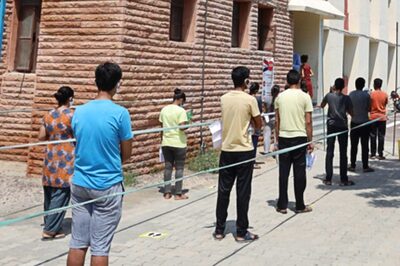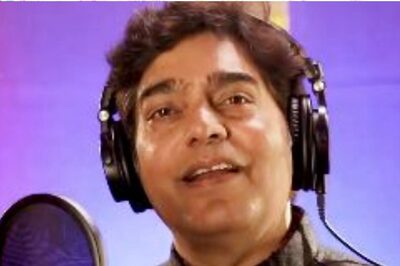
views
Yet again, in 2011, Sonia Gandhi features in the top 20 of the Forbes Power list. How did a girl, born in a small town in northern Italy, rise to the position of being one of the most influential people in the world - and stay there, year after year? Having established an unassailable position in the Indian National Congress Party, she is now empowering her son Rahul with more authority to move to the front. If her delicate succession plan works out, it could add a whole new twist to Sonia's enigmatic leadership style.
However, it was circumstance and tragedy, rather than ambition that paved Sonia's path to power. Part of the trajectory that brought her to the position of leading the coalition running the world's largest democracy was experiencing one fatal accident and two assassinations in the family of her in-laws. Sonia's story represents the greatest transformational journey made by any world leader in the last four decades.
What exactly is her relationship to the level of influence she holds? Compiling my recent biography of Sonia Gandhi, I found that as her life circumstances changed over the years, so did her attitude to power and politics.
Sonia, her pilot husband Rajiv and their two children, Rahul and Priyanka, initially enjoyed a relatively quiet life in the home of her mother-in-law, Prime Minister Indira Gandhi. Being part of the Indian premier's family was Sonia's first real encounter with high public status. The aristocratic, Kashmiri dynasty she was now part of had fame and deep roots in the leadership of the Independence movement - so she was living a university course in power and how to handle it. Rajiv's younger brother Sanjay, who also lived with them and worked alongside his mother, was a young dynamo, fired up with political ambition.
Indira had to manage political opponents, fierce critics and ambitious beasts within her own party. She used different tactics; splitting the Indian National Congress Party and developing a ruthless, autocratic style. She endowed her personal staff with political power and developed a kitchen cabinet. Sonia bonded with her mother-in-law, so she saw the machinations of party politics and government from a different perspective to many commentators on the outside. Sonia was witness to the betrayals - "the helplessness of the individual in the face of…deliberate distortion" and articulated later how politics and power attracted both those with ambition as well as those with a sense of purpose.
So in 1980, when Sanjay was killed while flying a stunt plane and pressure was immediately put on Rajiv to take his place, Sonia unsuccessfully resisted the call with all her might. She reportedly took to her room for four days and lost weight. Duty, however, won out.
When Indira was assassinated in 1984, Sonia was terrified that if she allowed her husband to become prime minister, as the Party desired, he would be murdered too. But he took on the mantle of responsibility and she adjusted again, travelling the world and sharing his vision for the marginalised of India. Aides and journalists who were with the couple on these trips told how she would always keep herself aloof during official meetings, that there would be a line that the press and officials could not cross. She wanted to keep a little bit of their lives together private.
In January 1988, Sonia and the children accompanied Rajiv on an official tour to the exquisite coral reef Lakshadweep Islands, to the south west of the coast of India. Sonia took time away from formal functions to visit the administrator, Wajahat Habibullah, and his wife Shahila, who found her relaxed and curious about their island life. Then, as now, she was careful to respect her privileged position. On Lakshadweep, when her children were offered a ride in a duty helicopter going to the mainland, she restrained them in Hindi, saying, "Don't take undue advantage." She did not want the family to be seen to be using its position unfairly.
When Sonia's worst fears were realised and Rajiv was assassinated by a Tamil Tiger in 1991, many expected Sonia to take on the mantle of party president. She was not interested; she was too distraught. However, her position meant that there was a job she could do, and that was to complete her husband's unfinished agenda. She did not need to be in politics full time to take Rajiv's project forward, she felt. So, along with her husband's friends and colleagues, she agreed to the formation of the Rajiv Gandhi Foundation (RGF) within a month of the murder. Sonia was its chairperson.
Sunil Nehru, a senior member of the family, described Sonia in initial weekly meetings as quiet, withdrawn, not really contributing. She once asked the RGF's Dr V Krishnamurthy, "Why don't I leave it to the professionals?" She wanted to work on her husband's mission but was seeking guidance too. She was apparently aware of her limitations.
But 'the professionals' insisted she stay and chair, conscious that one day she might be required to take on a 'larger role'. Gradually, as Sonia sat and listened through three-hour meetings, talking to experts from different disciplines, her confidence and ability to assimilate grew, until eventually she was handling herself very well, chairing public meetings, hosting world leaders and international figures like the late John Kenneth Galbraith in conferences organised by the Rajiv Gandhi Institute of Contemporary Studies.
Sonia also drew on her inner strength and was sensitive to the spirituality that pervades Indian society; a Soka Gakkai Buddhist principal, Akash Ouchi, told about a special meeting his president had with Sonia less than a year after Rajiv's death, which she found comforting.
After the first assassination, Sonia grieved and paid homage through compiling books of correspondence between Indira and her father, Jawaharlal Nehru, which provided "a philosophical… underpinning" to the work of two of the most important figures in Indian contemporary history. Sonia reaches back into the wellsprings of modern India and her husband's ideals when shaping her own vision.
Rather than harbour anger for the assassins who killed her loved ones, Sonia marked the spot where Indira was shot by her bodyguards with a sheet of glass. The clothes Rajiv was wearing when he was killed, hang, blackened and torn, in the house where they all lived, now preserved as the Indira Gandhi Memorial Museum. In 1999, she even asked President K.R. Narayanan for one of Rajiv's murder squad, Nalini Sriharan's death sentence commuted to life in order that Nalini's daughter would not grow up without her mother.
On the political front, Sonia only agreed to support the Congress Party full-time when it really began to fall apart. It was difficult; she was not yet used to giving speeches in Hindi or appearing on the stump on her own. But a sense of duty propelled her forward. She became party president and leader of the Opposition. She had decided by the late '90s that she would never become prime minister; she had already marked out Manmohan Singh for the job and told President Narayanan so but did not announce it publicly, knowing her ambitious Party colleagues would have the unelected mild-mannered technocrat for breakfast if they found out. As part of her efforts to rebuild her party, she skillfully forged alliances by meeting politicians from across the aisle for tea or dinner without hubris.
By the 2004 general election, Sonia had figured out that the only way to emerge victorious was to lead from the front, and threw everything into an energetic campaign, often sleeping for no more than three hours a night, absorbing briefings and working on her speeches.
When the results came in, announcing a win for the United Progressive Alliance coalition of which Congress was the largest party, everyone expected Sonia to become prime minister. She confounded them and Manmohan Singh took charge. A true leader, she knew where her strengths lay. She managed the Party, as she still does - leaving the nuts and bolts of government to Singh. Unlike Indira, she did not develop a kitchen cabinet and does not invest her personal staff with political authority. She works in a consensual style, listening carefully before coming to a decision.
Sonia shares with Singh a gentle, dry sense of humour, but barely expresses any emotion through physical gesture. Only those who have known her for a long time can read her; she may wrinkle her nose, look down or away if she is displeased, and if she is happy with something, there may be just the hint of a smile. Underscoring her behaviour at all times is a respect for the rule of law. In a country marred by rampant corruption, she remains untainted by even a hint of scandal and carries her power with grace and with dignity.
This is most marked in public. From 1991 onwards, when it first appeared likely that Sonia would step onto the political stage, the media, a doubting public and political opponents took her apart, questioning her experience, raising her foreign origins, her religion, and her relationship with India's Nehru dynasty as metaphorical rods to beat her with. The abuse grew more intense once she took over the reins of the Congress Party, but she did not retaliate, even though there are still swathes of the population that resent her.
Silence is one of her favourite tools; it keeps everyone guessing and means that she is only as involved in events as she chooses to be. This frustrates her critics as they would like to see someone occasionally taking responsibility.
However, she does feel responsible to the marginalised; all the social legislation she developed through the think-tank she founded, the National Advisory Council (NAC), is tilted in that direction.
While the NAC is an influential, historic first of its kind in India, Sonia is always respectful of the office of Prime Minister and does not exert pressure on him. As shown by her Forbes ranking, she may be more powerful, but that doesn't stop her going to his office for meetings, rather than the other way round. She waits until he leaves a function before she does, she always stands up when he enters the room and she stands behind him when they are at the microphone together. Her children show a similar politeness to their elders, even to their harshest political opponents.
Sonia now holds the record as the longest serving Congress president. Though she rebuilt the Party and led it to victory (with the help of its allies) in two successive elections, she is needed now as much as ever, as seen by the disarray the Party found itself in when she was in the US for surgery during summer 2011.
Sonia is 64, and her sense of duty to the Nehru-Gandhi legacy means that she has likely thought long and hard about the transfer of power. History demonstrates that the transition of Party leadership tends to work better if someone related by blood or by marriage takes over; it is more acceptable to the Party. Whereas Indira Gandhi practically foisted Sanjay on the Indian public, whether he - and they - were ready or not, Sonia's introduction of Rahul - once he made the decision to enter politics in 2004 - has been much gentler and more dignified.
Sonia wants Rahul at her side, as in her position, she is effectively alone. Sonia learnt, like Indira, to shed her friends; the only people she can fully trust are her children. It is evident that she, Priyanka and Rahul remain as close as they ever were, consulting and talking regularly - if not daily.
Rahul has been given plenty of time to learn on the job. He travelled with his mother to China, with the Prime Minister to Afghanistan, and meets international statesmen at home. He is frequently seen on stage with Sonia, a symbolic image that resonates. Sonia said a few years ago that Rahul and others of his age needed to gain experience in public life before being handed responsibility. Her son, now in his early 40s, is his own man with his own style and will decide how he deals with his own destiny. If the succession takes place on Sonia's watch, she can oversee a smooth transition and move, perhaps, more to the hinterland - as a mentor and guide. The transfer of power has only just begun.
Whatever happens, Sonia Gandhi has already carved for herself a unique place in contemporary history and is going to be impossible to replace.




















Comments
0 comment